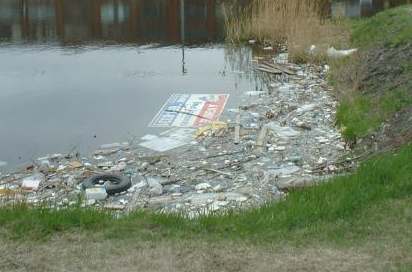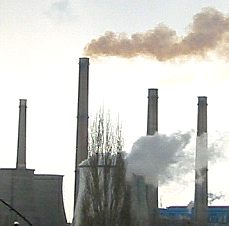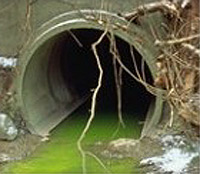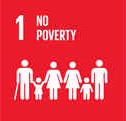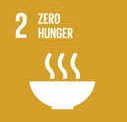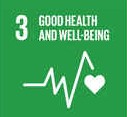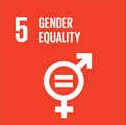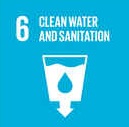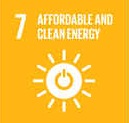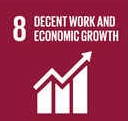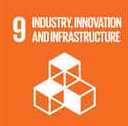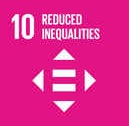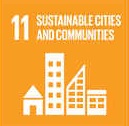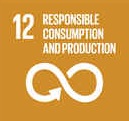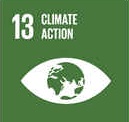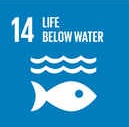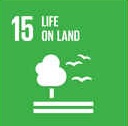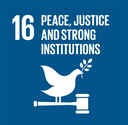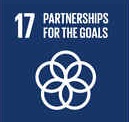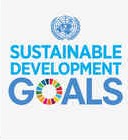|
POLLUTION
|
|||||||||
|
Pollution is the release of chemical, physical, biological or radioactive contaminants to the environment. Principal forms of pollution include:
The Lachine Canal, in Montreal, is polluted
Sources and causes
Arguably the principal source of air pollutants worldwide is motor vehicle emissions. although many other sources have been found to contribute to the ever growing problem. worldwide reports claiming our glaciers are melting, and temperature is rising may have little, to no credibility. While the U.S. has adopted stringent emissions controls, the EU has not been as assertive in this field; nevertheless, the U.S. is still the leading contributor to mobile source air emissions merely due to the very high number of vehicle miles travelled per capita. other countries world wide ranging from even the poorest arer still contributing to the growing amounts of carbon dioxide entering our outer atmosphere. Underdeveloped countries lag severely in emission controls on motor vehicles, especially roadway vehicles, and on a per vehicle mile travelled basis produce many times the emissions of the U.S fleet.
The U.S., Russia, China and Japan lead the world in air pollution emissions; Canada is the number two country if measured in emissions per capita.
Principal stationary pollution sources include chemical plants, coal-fired power plants, oil refineries, nuclear waste disposal activity, incinerators, large animal farms, PVC factories, metals production factories, plastics factories, and other heavy industry.
Some of the more common soil contaminants are chlorinated hydrocarbons (CFH), heavy metals such as lead, which is found in lead paint and until recently in gasoline, MTBE, cadmium, which is found in rechargeable batteries, chromium, zinc, arsenic and benzene. Ordinary municipal landfills are the source of many chemical substances entering the soil environment (and often groundwater), emanating from the wide variety of refuse accepted, especially substances illegally discarded there, or from pre-1970 landfill that may have been subject to little control in the U.S. or EU.
Pollution can also be the consequence of a natural disaster. For example hurricanes often involve water contamination from sewage, and petrochemical spills from ruptured boats or automobiles. Larger scale and environmental damage is not uncommon when coastal oil rigs or refineries are involved. Some sources of pollution, such as nuclear power plants or oil tankers, can produce widespread and potentially hazardous releases when accidents occur.
In the case of noise pollution the dominant source class is the motor vehicle, producing about ninety percent of all unwanted noise worldwide.
Air pollution
Effects on human health
Pollutants can cause diseases, including cancer, lupus, immune diseases, allergies, and asthma. Higher levels of background radiation have led to an increased incidence of cancer and mortality associated with it worldwide. Some illnesses are named for the places where specific pollutants were first formally implicated. One example is Minamata disease, which is caused by mercury compounds.
Bad air quality can kill. Ozone pollution can cause sore throats, inflammation, chest pain and congestion. Oil spills can cause skin irritations and rashes. Noise pollution induces hearing loss, high blood pressure, stress and sleep disturbance.
Contamination caused by pollution can have damaging effects in the brain and central nervous system. Studies have shown that brain of animals actually shrink from prolonged exposure to contaminants in the environment.
Regulation and monitoringUnited States
The United States Environmental Protection Agency (EPA) has established threshold standards for air pollutants to protect human health on January 1, 1970. One of the ratings chemicals are given is carcinogenicity. In addition to the classification "unknown", designated levels range from non-carcinogen, to likely and known carcinogen. But some scientists have said that the concentrations which most of these levels indicate are far too high and the exposure of people should be less. In 1999, the United States EPA replaced the Pollution Standards Index (PSI) with the Air Quality Index (AQI) to incorporate new PM2.5 and Ozone standards.
Passage of the Clean Water Act amendments of 1977 required strict permitting for any contaminant discharge to navigable waters, and also required use of best management practices for a wide range of other water discharges including thermal pollution.
Passage of the Noise Control Act established mechanisms of setting emission standards for virtually every source of noise including motor vehicles, aircraft, certain types of HVAC equipment and major appliances. It also put local government on notice as to their responsibilities in land use planning to address noise mitigation. This noise regulation framework comprised a broad data base detailing the extent of noise health effects.
The U.S. has a maximum fine of US$25,000 for dumping toxic waste. However, many large manufacturers decline to dispute violations, as they can easily afford this small fine. The state of California Cal/EPA Office of Environmental Health Hazard Assessment (OEHHA) has maintained an independent list of substances with product labeling requirements as part of proposition 65 since 1986.
Europe
Generally the European countries lagged significantly behind the United States in meaningful environmental regulation, including air quality standards, water quality standards, soil contamination cleanup, indoor air quality and noise regulations. In the United Kingdom it took until the 1840s to bring onto the statute books legislation to control water pollution which was extended to all rivers and coastal water by 1961. However, currently The clean up of historic contamination is controlled under a specific statutory scheme found in Part IIA of the Environmental Protection Act 1990 (Part IIA), as inserted by the Environment Act 1995, and other ‘rules’ found in regulations and statutory guidance. The Act came into force in England in April 2000. Pollution of Controlled waters. The second part of the statutory definition of contaminated land covers where polluting material is entering or likely to enter controlled waters. The statutory guidance provides that the likelihood of the entry of the contaminant is to be assessed on the balance of probabilities. It excludes substances, which have entered controlled waters in the past, and the entry has now ceased and is unlikely to recur. The definition in s.78A (9) mirrors the provision in the pollution control provisions of the Water Resources Act 1991 and Case Law on that definition suggests that very small quantities of contaminant could be considered to be polluting. The Water Act will, however, amend the definition of contaminated land within Part IIA (in relation to pollution of controlled waters), in that the contamination will need to be deemed to be significant. There is currently no guidance available on what may, or may not, be significant pollution of controlled waters but one that is based upon risk is considered to be appropriate. This approach has already been taking place throughout the industry and widely accepted by the regulators as a means of assessing the significance of groundwater contamination. As such pollutant linkages with respect to ground and surface water targets/receptors are considered in a similar manner to that for significant harm.
Soil Contamination Guidance Two sources of published generic guidance are currently commonly used in the UK: D The Contaminated Land Exposure Assessment (CLEA) Guidelines; and D The Dutch Standards.
The ICRCL guidance has been formally withdrawn by DEFRA, for use as a prescriptive document to determine the potential need for remediation or further assessment. Therefore, no further reference is made to these former guideline values.
Other generic guidance that may be referred to (to put the concentration of a particular contaminant in context), include the United States Environmental Protection Agency Region 9 Preliminary Remediation Goals (US PRGs), the US EPA Region 3 Risk Based Concentrations (US EPA RBCs) and National Environment Protection Council of Australia Guideline on Investigation Levels in Soil and Groundwater.
The CLEA model published by DEFRA and the Environment Agency (EA) in March 2002 sets a framework for the appropriate assessment of risks to human health from contaminated land, as required by Part IIA of the Environmental Protection Act 1990. As part of this framework, generic Soil Guideline Values (SGVs) have currently been derived for ten contaminants to be used as “intervention values”. These values should not be considered as remedial targets but values above which further detailed assessment should be considered.
Three sets of CLEA SGVs have been produced for three different land uses, namely residential (with and without plant uptake), allotments and commercial/industrial and it is intended that the SGVs replace the former ICRCL values. It should be noted that the CLEA SGVs relate to assessing chronic (long term) risks to human health and do not apply to the protection of ground workers during construction, or other potential receptors such as groundwater, buildings, plants or other ecosystems. The CLEA SGVs are not directly applicable to a site completely covered in hardstanding, as there is no direct exposure route to contaminated soils.
To date, the first ten of fifty-five contaminant SGVs have been published, for the following: arsenic, cadmium, chromium, lead, inorganic mercury, nickel, selenium ethyl benzene, phenol and toluene. Draft SGVs for benzene, naphthalene and xylene have been produced but their publication is on hold. Toxicological data (Tox) has been published for each of these contaminants as well as for benzo[a]pyrene, benzene, dioxins, furans and dioxin-like PCBs, naphthalene, vinyl chloride, 1,1,2,2 tetrachloroethane and 1,1,1,2 tetrachloroethane, 1,1,1 trichloroethane, tetrachloroethene, carbon tetrachloride, 1,2-dichloroethane, trichloroethene and xylene. The SGVs for ethyl benzene, phenol and toluene are dependent on the soil organic matter (SOM) content (which can be calculated from the total organic carbon (TOC) content). As an initial screen the SGVs for 1% SOM are considered to be appropriate.
Groundwater Guidance The Water Supply Regulations (WSR) 1989 value, the UK Freshwater Environmental Quality Standards (FEQS), Dutch Intervention Values (DIV), World Health Organisation (WHO) Guidelines for Drinking Water Quality 2004 and USEPA Drinking Water Advisory are used in the UK as initial conservative screening values to assess whether groundwater contamination requires further assessment in terms of the wider groundwater/surface water environment. Where further assessment is considered necessary, this is undertaken qualitatively or quantitatively (if considered necessary or appropriate)on a Site specific basis using the Environment Agency (EA) Spreadsheets associated with R & D Paper 20, “Methodology for the Derivation of Remedial Targets for Soil and Groundwater to Protect Water Resources, Version 2.2” or similar.
The EU is presently entertaining use of the carcinogen MTBE as a widespread gasoline additive, a chemical which has been in the process of phaseout in the U.S. for over a decade. Despite this, European pollution output is far lower than that of the USA. In the year 2000, UK Air Quality Regulations were established and they were further amended in 2002. There has also been British harmonization with EU regulations.
Polluted drains
China
China's rapid industrialization has increased pollution and made it the world's leader in carbon dioxide emissions. China has some relevant regulations: the 1979 Environmental Protection Law, which was largely modelled on U.S. legislation. But the environment continues to deteriorate, wrote Xiaoying Ma and Leonard Ortolanor in 2002. Twelve years after the law, only one Chinese city was making an effort to clean up its water discharges (Sinkule, 1995). This indicates that China is about 30 years behind the U.S. schedule of environmental regulation and 10 to 20 years behind Europe.
International
The Kyoto Protocol is an amendment to the United Nations Framework Convention on Climate Change (UNFCCC), an international treaty on global warming. It also reaffirms sections of the UNFCCC. Countries which ratify this protocol commit to reduce their emissions of carbon dioxide and five other greenhouse gases, or engage in emissions trading if they maintain or increase emissions of these gases. A total of 141 countries have ratified the agreement. Notable exceptions include the United States and Australia, who have signed but not ratified the agreement. The stated reason for the United States not ratifying is the exemption of large emitters of greenhouse gases who are also developing countries, like China and India.
LINKS and REFERENCES
World leaders need constant support from the electorate if they are to put corrective policies in place. Help us to remind your local representative by supporting our high profile mission.
MORE ON AGENDA 21 MEMBERS OF PARLIAMENT A-Z HOUSE OF LORDS A-Z COUNCIL'S AGENDA 21
A taste for adventure capitalists
Solar Cola - a healthier alternative
|
|||||||||
|
This website is Copyright © 1999 & 2019. The bird logos and name SeaVax are trademarks. All rights reserved. All other trademarks are hereby acknowledged. Max Energy Limited is an educational charity.
|
